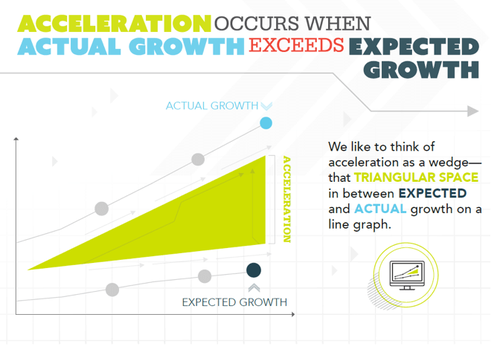Achieve Equity and College and Career Readiness with Accelerated Literacy Growth
By Steve Tardrew, Vice President of Assessment and Research, Achieve300 & Jennifer Begonia, Achieve3000
With students of all ages and in almost every classroom in U.S. schools not on-track for literacy at grade-appropriate levels (as per the National Assessment of Educational Progress 2015 and 2017), the need for accelerated literacy growth is abundantly clear.
Schools hold the responsibility to create conditions wherein ALL students can achieve grade-appropriate literacy, regardless of special needs, cultural or linguistic diversity, or socioeconomic status. And struggling readers must be supported by an academic environment that not only helps them catch up, but also helps them progress. Like so many aspects of educational equity, this presents multi-layered challenges that require ingenuity and hard work, with no one right solution or set of solutions for all.
But we at Achieve3000 believe that adding literacy acceleration to district and school literacy plans as an unambiguous and urgent goal—and finding the right approach and tools to execute against that goal—could make all the difference. We consider literacy to be the key to unlocking student success, and we want everyone to think about literacy acceleration as a means to achieving equity and excellence in our schools and classrooms.
How do we define literacy acceleration, exactly? In our view, acceleration occurs when actual growth exceeds expected growth; in fact, we like to think of acceleration as a wedge—that triangular space in between expected and actual growth on a line graph.

Page from the New eBook: Widening the Wedge
Our solutions use the Lexile Framework for Reading developed by MetaMetrics® to measure, predict, and track literacy growth.
If we take the Lexile® as the measure to set college and career readiness (CCR) growth targets, we can state that students need to know how to independently read and acquire knowledge from complex, nonfiction text at a Lexile level greater than 1300L to be truly ready for higher education and the workforce.[i] Next, by working backwards from 1300L and based on statistical research, we can assign Lexile targets to each grade, and within each grade, we can identify proficiency ranges (such as falls far below, approaches, meets, and exceeds).

Proficiency Ranges Developed with MetaMetrics for Achieve3000’s PRO Solutions
Now we can look specifically at how much students need to accelerate in order to catch up to grade level, establishing multi-year acceleration plans for students who are two or three grades behind expectations. (Because of Achieve3000’s breadth and depth of statistical analysis, we can predict and suggest how students’ can accelerate their progress toward that 1300 Lexile: by completing enough of our lessons with a high quality of work each year.)
As you’ll find in more detail in our eBook, Widening the Wedge for K-12 Students, we can also identify key points for schools and districts implementing an acceleration strategy by using available literacy research and our own analyses of Achieve3000 user data:
- Many students need more than a year’s growth in a year’s time to get on track. We must plan some students’ acceleration pathways as a multi-year process through which they make incremental progress each year.
- The most successful and high-impact schools maintain high expectations for learning for all students and provide timely support to students so they can pursue grade-level learning.
- Schools designed for literacy acceleration take a comprehensive approach to literacy across the content areas, providing systematic literacy support in content area classrooms and professional development for teachers.
- Some districts create a literacy acceleration focus, explicitly. For example, since 2014, Virginia’s Loudoun Public Schools prioritizes the acceleration of literacy in a seventh-grade class set aside for that purpose.
- Teachers know the most perfectly designed task only engages students when it’s meaningful to them, and that students won’t learn if “work lacks meaning because of its complexity, abstractness, or disinterest combined with the absence of appropriate scaffolding.”[i] For some students, emphasizing the connection between school learning and real-life learning gives students motivation to connect to instruction. [ii]
Students of all profiles show accelerated literacy gains of more than 3X what’s expected when they use Achieve3000’s PRO solutions with recommended quantity and quality of practice.[iii] This means a fifth grader who’s behind by three years can catch up by seventh grade and leave middle school prepared to take on the academic demands of high school. It means a ninth grader who’s reading at a fifth or sixth grade level can still graduate high school with her class. We feel confident that we’re offering one of the most effective means of systemic literacy acceleration, and that in partnership with school leaders and classroom teachers across the U.S. and the world, we can truly unlock each student’s potential.
ENDNOTES
[1] Stenner, A. J., Sanford-Moore, E., & Williamson, G. L. (2012). The Lexile® Framework for Reading quantifies the reading ability needed for “College & Career Readiness.” MetaMetrics Research Brief. Durham, NC: MetaMetrics, Inc.
[1] Tobin, R. Conundrums in the differentiated literacy classroom. Reading Improvement, Winter 2008, p. 159+. Accessed February 2019.
[1] Finnan, C., & Chasin, G. Accelerating the Learning of Low-Achieving Students: The Transformation of a Dropout. Phi Delta Kappa, 88(8), 625–629. 2007.
[1] Achieve3000. 2017-2018 National Lexile Study. Publication. Assessment and Research, Achieve3000. Lakewood, NJ: Achieve3000, 2019. 6.